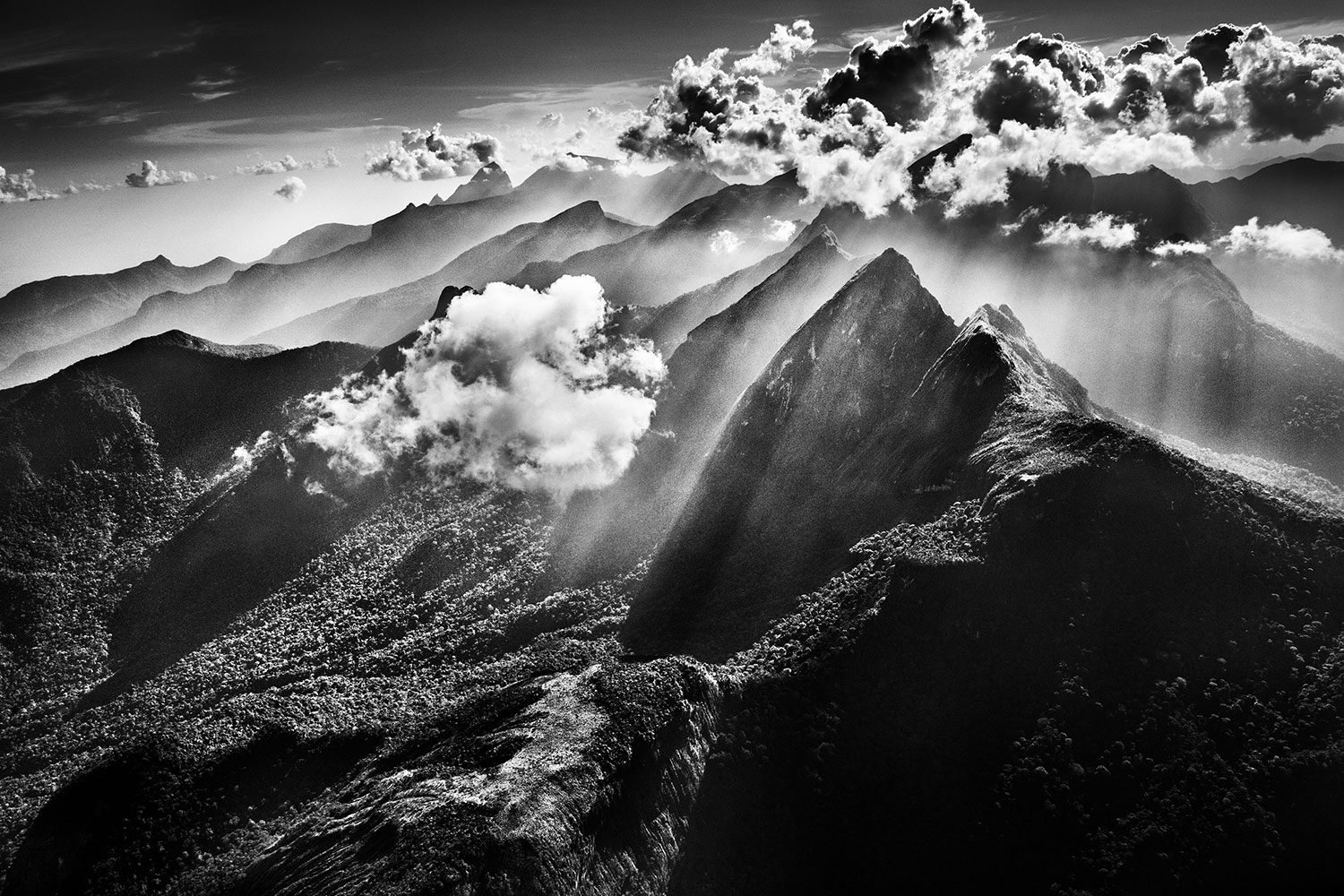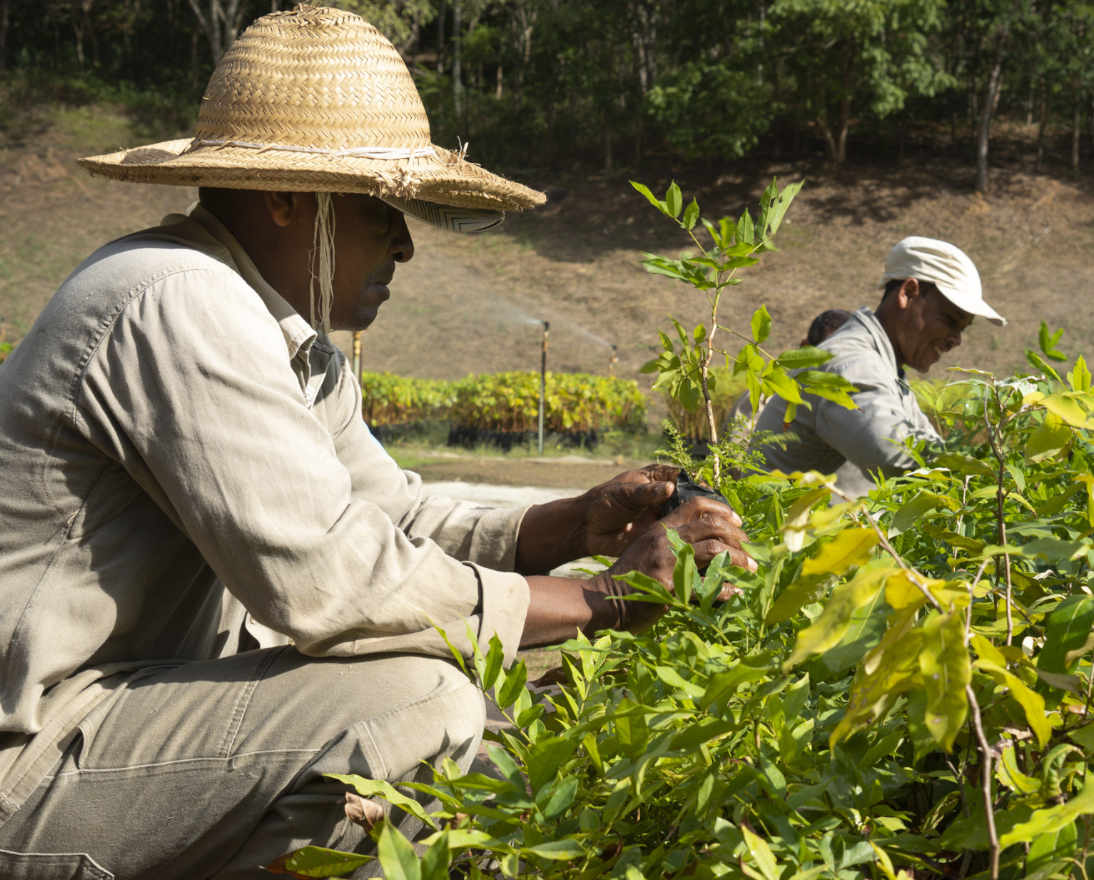Sebastião Salgado's Amazônia triumph
PeopleArticleMay 22, 2024
The renowned photographer's cri de coeur movingly chronicles the splendor, and fragility, of one of the world's most precious ecosystems.
Sebastião Salgado is one of the world’s premier photographers, equally at home in journalism, documentary and the art world. If there’s a through line in his work – think of “Workers” (1993); “Terra” (1997); “Migrations” (2000); “Genesis” (2013); and “Kuwait, A Desert on Fire” (2016) to name just a few – it is to bring to the fore the lives of exploited peoples and their ravaged natural environments.
The 80-year-old was even immortalized in 2014’s The Salt of the Earth – directed by the German filmmaker Wim Wenders and Salgado’s son Juliano Ribeiro – which garnered an Oscar nomination for Best Documentary Feature.
His latest project, Amazônia, is perhaps the most ambitious – and heartfelt – in his long, storied career, and one that Zurich Insurance Group (Zurich) serves as the main global sponsor. Salgado spent seven years documenting and celebrating the indigenous people and the diverse landscapes of the increasingly fragile Amazon rainforest in his native Brazil.
It was an arduous undertaking, logistically and physically. The Amazon rainforest covers parts of nine countries, with 60 percent of it within Brazil’s borders. It comprises an area more than eight times the size of France and contains one-tenth of all living plant and animal species. It has a population of 137,000 (down from 5 million in the 16th century) with 188 groups – the Yanomami perhaps the best known – who speak 150 different languages.
Salgado was aided by the National Indigenous People Foundation (FUNAI) who helped coordinate his movements and act as his go-between with the various local communities. He made many trips to the forest – with some of the stays lasting four or five weeks – and was accompanied by anthropologists, translators, at least two boat men, a cook and various forest specialists. Since indigenous groups are particularly susceptible to outside viruses and bacteria, Salgado and company had to have thorough medical exams and spend a week in quarantine before departing for the forest.
Even the Brazilian Air Force pitched in and gave them access to aerial views. The rest was left to Salgado and his empathetic lens, which took in shamans and ceremonies, biblical storms and Elysian summits.
The result is more than 200 ravishing photographs in black-and-white – so central to the Salgado aesthetic – that are almost painterly in their density and nuance. It’s no wonder that in 2021, the Paris-based Salgado was awarded the prestigious Praemium Imperiale art prize in painting – that’s right, painting. It’s not unprecedented for a photographer – Cindy Sherman and video artist Shirin Neshat, two contemporary art giants, also received the honor in years past – but it is unusual and points to his work’s depth and dimension.

Marauia´ mountain range. Yanomami Indigenous Territory, Municipality of Sa~o Gabriel da Cachoeira, state of Amazonas, Brazil, 2018.
The photographs are very much grounded in the Amazon but are, at the same time, otherworldly, whether in the almost unreal, or hyperreal, cloud formations over Arquipélago de Marauiá (top); the celestial light of the Serra do Marauiá (above); or the impossibly serpentine Rio Cauaburi (below). Has the sheer drama, and power, of an ecosystem ever been captured better?
Salgado almost lost an eye in the process and had two operations on his knee, but he came away a changed man. “I can say without hesitation, even after a career full of extraordinary experiences, nothing has given me greater joy than working with the dozen of indigenous communities portrayed in this book,” he writes. “Through them, thanks to them, I reconnected with my own prehistory. I rediscovered the lives we led thousands of years ago.”
Accompanying the images is an original soundtrack of the rainforest’s natural sounds by Jean-Michel Jarre. As formally rewarding as the photographs are, these sounds complete the work and give it an authenticity rarely seen (or heard) in a gallery or museum. Salgado’s wife, Lélia Wanick Salgado, has served as the curator and designer, and when she conceived how visitors would move through the exhibition space, she wanted them to be fully immersed not only in the sights of the Amazon but the natural sounds: of the wind, the flora, the wildlife, the rain, the waterfalls. It becomes a glorious sensory experience that envelops the viewer.
The show – which, so far, has been seen by well over 1 million visitors – commenced in 2021 and embarked on a world tour that included the MAXXI Museum in Rome; the Science Museum in London with a musical performance there at the Barbican Centre; then onto the Sesc in São Paulo; Rio de Janeiro; Avignon; Madrid; Los Angeles; Milan; and Zurich. Some venues, it’s worth noting, are offering a new feature in the form of “Amazônia Touch,” the first photographic tome – consisting of brass plates – conceived and designed for blind and visually impaired people. It’s a collaboration between the Salgados and Foundation Visio – an organization dedicated to opening access to cultural activities for the visually-impaired – and has 21 panels that allow visitors to have a tactile reading experience.
It’s currently in Trieste, Italy, at the Salone degli Incanti, through October 13, 2024.
Then it’s on to the National Museum of Singapore (November 22 – March 2, 2025) and Barcelona’s Museu Maritim (December 2 – September 29, 2025).

Cauaburi River, Yanomami Indigenous Territory, state of Amazonas, Brazil, 2018.
If you don’t manage to get to one of these venues, the 528-page catalogue – given, like so many of Salgado’s past projects, the grand Taschen treatment – makes for an impressive, if hefty, alternative.
While the work isn’t overtly political, it is ever so timely and serves, in its own way, as a call to action: Preserve and protect this delicate, vital ecosystem and by extension the planet itself. Or as Sebastião and Lélia write in their dedication page of the Taschen catalog: “It is a celebration of the survival of their cultures, customs and languages. It is also a tribute to their role as the guardians of the beauty, natural resources and biodiversity of the planet’s largest rainforest in the face of unrelenting assault by the outside world.”
The Salgados are also trying to make a difference. In 1998, they founded the nonprofit Instituto Terra on a former family cattle farm in another rainforest, the Mata Atlântica – or Atlantic Forest – which has been decimated over the centuries. Since then, more than 2 million trees have been planted and an ecosystem partially restored, with more than 250 species of wildlife returning to the habitat. Zurich joined their efforts in 2020, and the Zurich Forest Project will contribute another 1 million trees and help with the continued expansion of the Instituto.
Back in 2021, Salgado sat down with Zurich’s Group CEO Mario Greco for “Future Planet,” where they discussed what we can all do right now to combat climate change and save the environment. At one point, Salgado said, “To have an idea is very important. But it’s not enough. You must have partners…that want as much as you to rebuild the planet.”
Zurich is one of those partners – and is thrilled to be.


